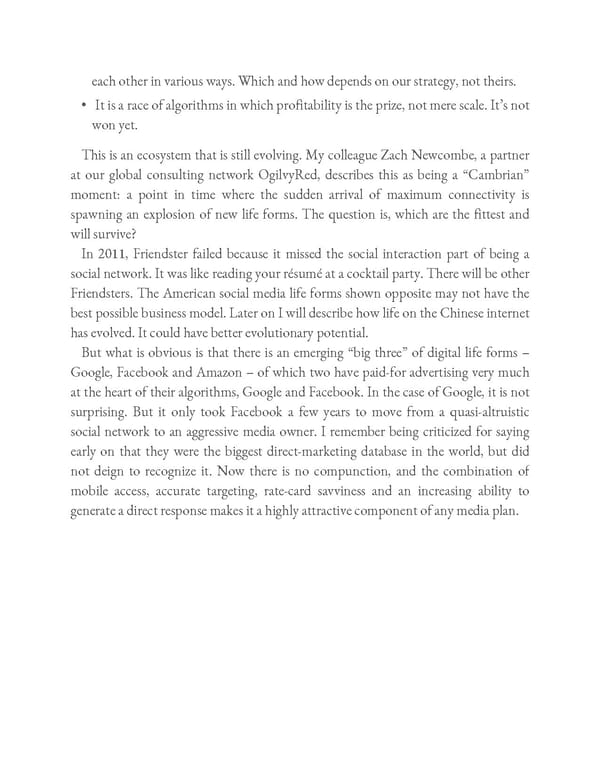each other in various ways. Which and how depends on our strategy, not theirs. • It is a race of algorithms in which profitability is the prize, not mere scale. It’s not won yet. This is an ecosystem that is still evolving. My colleague Zach Newcombe, a partner at our global consulting network OgilvyRed, describes this as being a “Cambrian” moment: a point in time where the sudden arrival of maximum connectivity is spawning an explosion of new life forms. The question is, which are the fittest and will survive? In 2011, Friendster failed because it missed the social interaction part of being a social network. It was like reading your résumé at a cocktail party. There will be other Friendsters. The American social media life forms shown opposite may not have the best possible business model. Later on I will describe how life on the Chinese internet has evolved. It could have better evolutionary potential. But what is obvious is that there is an emerging “big three” of digital life forms – Google, Facebook and Amazon – of which two have paid-for advertising very much at the heart of their algorithms, Google and Facebook. In the case of Google, it is not surprising. But it only took Facebook a few years to move from a quasi-altruistic social network to an aggressive media owner. I remember being criticized for saying early on that they were the biggest direct-marketing database in the world, but did not deign to recognize it. Now there is no compunction, and the combination of mobile access, accurate targeting, rate-card savviness and an increasing ability to generate a direct response makes it a highly attractive component of any media plan.
 Ogilvy on Advertising in the Digital Age Page 62 Page 64
Ogilvy on Advertising in the Digital Age Page 62 Page 64